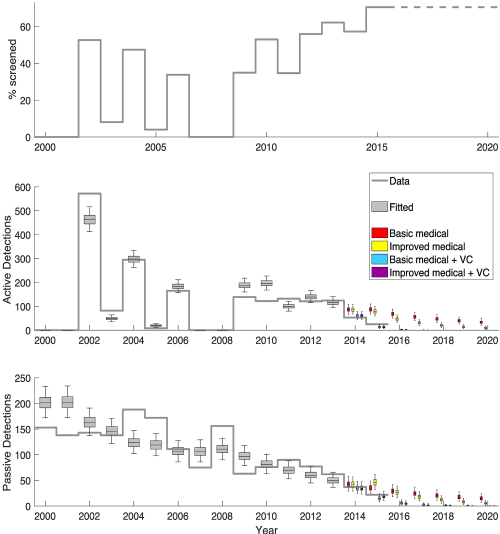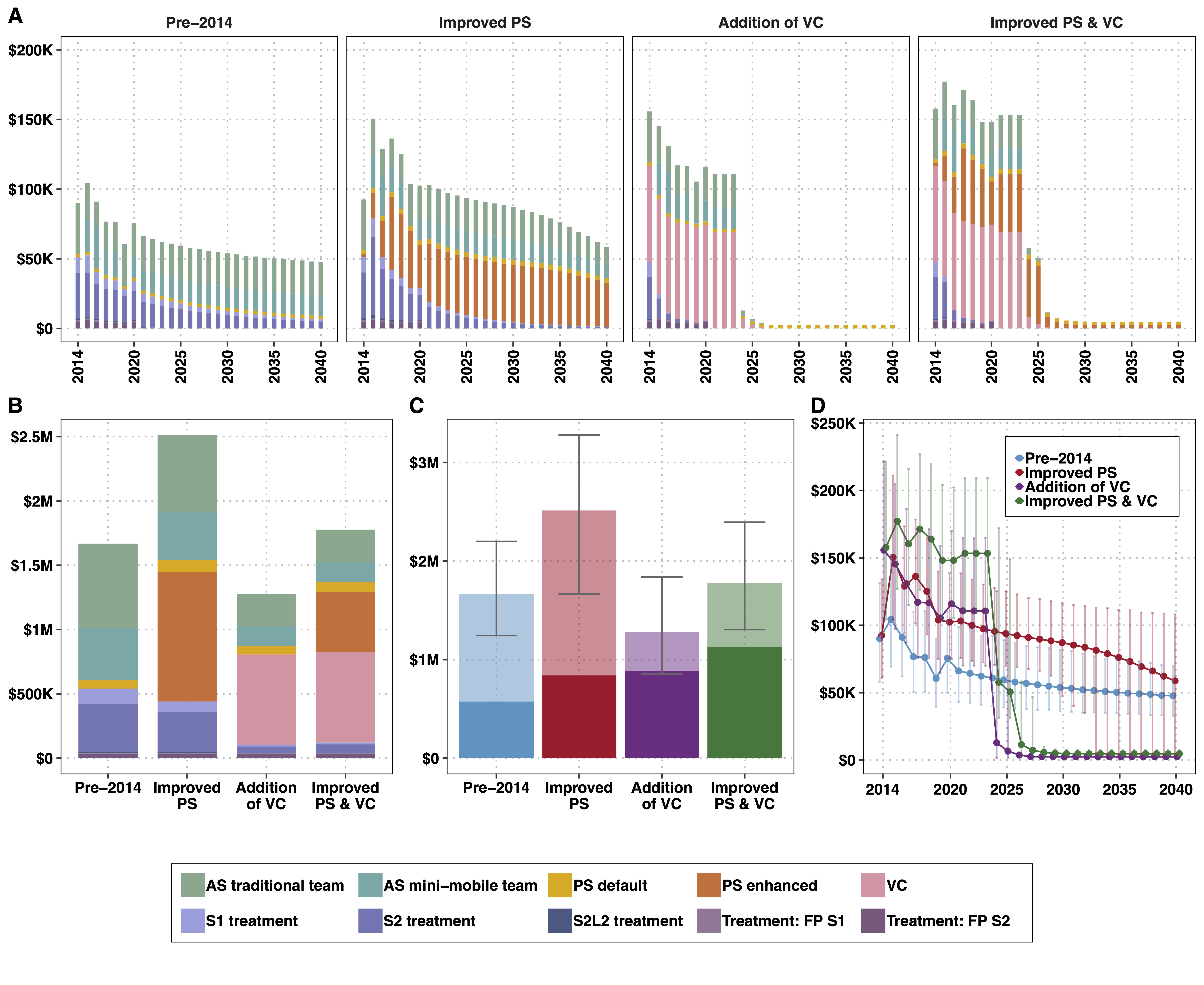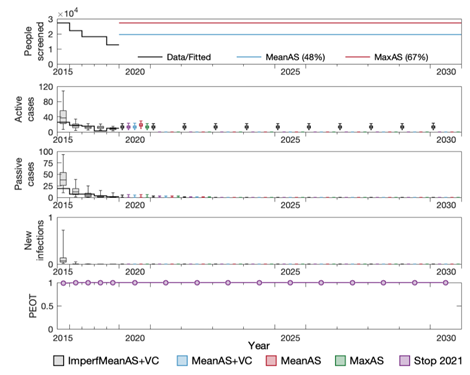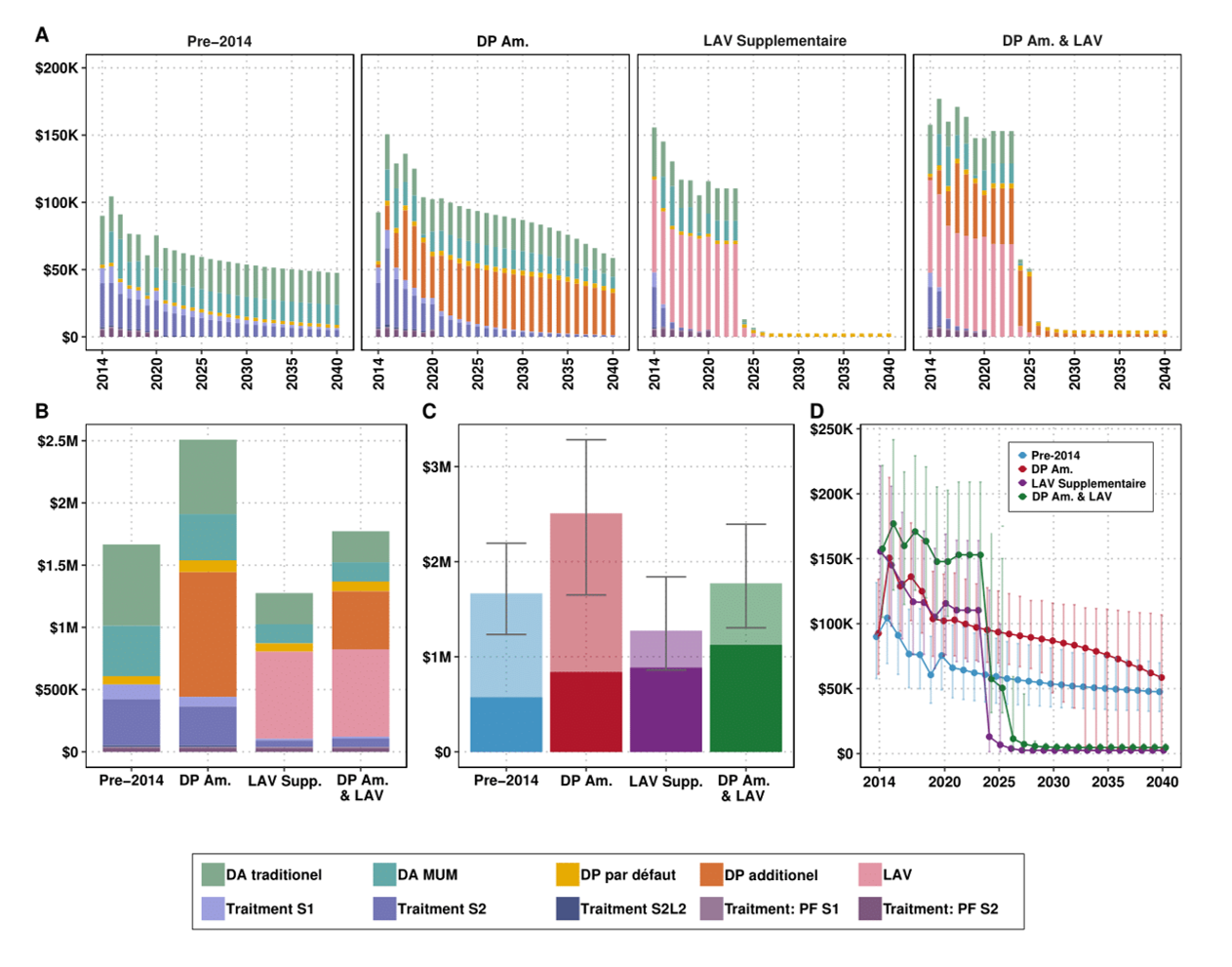Chad/ Tchad
Health Economics in Mandoul
PNLTHA-Chad and their partners made substantial changes to their gHAT interventions in Mandoul from 2014 including improved screening in health facilities and the use of vector control. In our most recent article we explore whether these past interventions were an effective use of resources and what the health economic implications would have been had less ambitious strategies been performed. Improvements rolled out for active and passive screening from 2015 have paved the way for more rapid diagnosis and accessible treatment. However, including vector control as part of the strategy from 2014 has been shown to be good value-for-money and substantially increased the probability of reaching the target of elimination of transmission (EoTLink opens in a new window) in Mandoul. While investment in vector control was computed to be cost-saving, the investment in improved passive screening was cost-effective at a willingness-to-pay (WTPLink opens in a new window) of $747/disability-adjusted-life year (DALYLink opens in a new window) averted. At $500/DALYLink opens in a new window averted, there is 37% probability that the implemented strategy (Improved passive screening & vector control) was optimal, while at a WTPLink opens in a new window of $1000/DALYLink opens in a new window averted, the probability that the implemented strategy was optimal is 60% (see figure).
The paper also considers future strategies and concludes that the scaleback of vertical interventions appears cost-effective if passive screening remains robust in Mandoul and that any strategies with interventions other than basic continuation of passive screening are not cost-effective. The analysis also showed that imperfect test specificity in active screening (see strategy Mean AS & VC (spec = 99.93%)) is very likely to incur some direct costs in over-treatment, but that these costs would be overshadowed by the inability to confidently stop vertical activities. If vector control and active screening continue until no more parasitologically positive cases are detected, costs are predicted to be at most $676,000 for the period of 2021–2040. This could enable the shifting of resources to tackle other extant foci in Chad (Maro and Moissala).
Explore the results from the Mandoul cost-effectiveness analysis through our graphical-user interface.
Click here Link opens in a new windowto view our infographic
Updated modelling analysis for Mandoul
Numerous questions remain around current transmission and reporting in the Mandoul focus of Chad including how effective new vector control and enhanced passive surveillance measures were when introduced; what we know about underlying transmission given reported cases in 2018 and 2019; when we would expect to observe zero cases; and when active screening and vector control should be stopped.We improved and tested our previous Warwick gHAT transmission model by refining model fitting methods, changing assumptions around diagnostic specificity, and including additional years of data. In accordance with our previous paper (Mahamat et alLink opens in a new window) the model suggested that transmission is likely already interrupted in Mandoul, however, our improvements to the model allowed us to take the analysis further by suggesting that a substantial proportion of newly detected cases during recent active screening are likely false positives. The new analysis also enabled us to quantitatively assess the improvement in time to detection in passive screening due to new intervention from 2015.
We recommend that, if the few remaining reported cases are confirmed through extra measures, zero case reporting may occur shortly and could be used to carefully guide the cessation of activities if passive screening remains strong.
Data and analysis toolLink opens in a new window: Transmission and case projections (2000-2050) for Mandoul are available to view online via a data and analysis tool (GUI), providing online access to the vast amount of data and results of this research project in a user-friendly way.
First modelling of new interventions in the Mandoul focus

Historic case data was used to assess the transmission dynamics in the Mandoul focus of Chad. For the period 2000-2013 we used the Warwick gHAT model fitted to the data to quantify reduction in new infections due to active and passive screening activities. In 2014 vector control was introduced to Mandoul, followed by improvements in passive detection in 2015. Using the model to perform counterfactual scenario analysis, we were able to estimate the contribution of these new interventions to reduction in case reporting and transmission for 2014-2015.
The model suggested that approximately 70% of the decline in case reporting during 2014-2015 was due to vector control and that transmission was likely to have been interrupted during this period. The improvement in passive screening were estimated to have contributed to around 9% of the transmission reduction.



